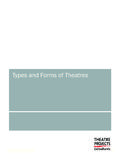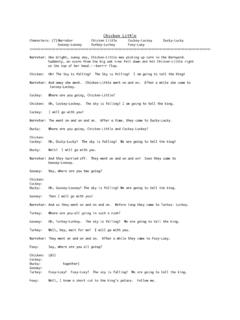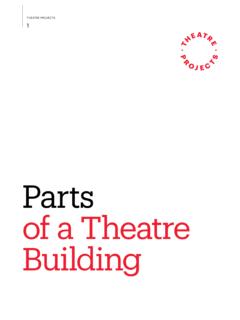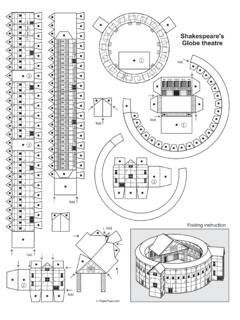Transcription of GUIDE TO FILMING LIVE THEATER - University of Miami
1 GUIDE TO FILMING live THEATERARCHIVAL FILMING GUIDELINES AND LESSONS LEARNED FROM THE CTDA PROJECTPUBLISHED BY DIGITAL SCHOLARSHIP AND PROGRAMS University OF Miami LIBRARIESVERSION 2012 GUIDE TO FILMING live THEATERARCHIVAL FILMING GUIDELINES AND LESSONS LEARNED FROM THE CTDA PROJECTVERSION JANUARY 2012 WRITTEN BY:NOELIS M RQUEZXAVIER MERCADOLILLIAN MANZORMARK BUCHHOLZBRYANNA HERZOGEDITED BY:BRYANNA HERZOGPUBLISHED BY DIGITAL SCHOLARSHIP AND PROGRAMS University OF Miami LIBRARIESFUNDED IN PART BY:ANDREW W. MELLON FOUNDATIONUNIVERSITY OF Miami LIBRARIESCOLLEGE OF ARTS & 2012v TABLE OF CONTENTSI ntroduction 1 Equipment List 3 FILMING Guidelines 4 Stage Design 5 Camera Placement 5 FILMING With Two Cameras 6 FILMING Considerations 8 Leadroom and Headroom 8 Avoiding the Audience 8 Light Brightness Changes and Adjustments 9 Behind the Camera 10 Videographer vs Director of Photography 10 When do you use Close-ups, Mid Shots and/or Wide Angles?
2 10 When do you use zooms? 15 Showcasing production and costume design 16 How do you start and end the show? 16 When do you stop recording? 16 What do you do during Intermissions? 16 Audio Guidelines 17 Editing Guidelines 18 Justifying the Cut 18 Catch the Emotion 19 Best Angle for the Action 19 Emphasizing Rhythm 20 Dividing a Series of Actions 20 Covering Personalities 21 Scene Changes 21 Concealing Errors 22 Editing pre-performance, intermission, and post-performance 22 The Dissolve Transition 22 Things NOT TO DO 22 Color Correction 23 Audio Editing 23 Lessons Learned in the Editing Room 24 Appendix A: Sony NXCAM Settings 25 Recording Settings 25 White Balance Settings 25vi To select a White Balance Preset, follow these steps.
3 26 When to Use the MANU WB TEMP PRESET 26 Adjusting the GAIN Settings 26 Procedure for Operation of Gain 27 Procedure for Changing Gain Preset Switch Settings 27 Formatting the Storage Media (SD Cards and Hard Drive) 28 Audio Settings 28 Audio Input Settings 29 Appendix B: Boundary Microphones 30 Equipment 30 Preparations 30 Microphone Positioning 31 Precautions 31 Connection to the Field Mixer 32 Setup 32 Operation 33 Sound Check 34 Appendix C.
4 Production Report 35 Appendix D: Editing With Final Cut Pro 37 Load Footage 37 Audio Editing 37 Editing Boundary Audio in FCP 371 IntroductionThere is no one method to film live THEATER for documentation THEATER and performance are probably two of the most evanescent forms of cultural heritage. They are always provisional, ephemeral, and non-repeatable. As intangible cultural manifestations, they transmit an embodied memory that is extremely fragile and risks disappearing. This non-repeatability points to two salient characteristics of THEATER as live -art performance: 1) It is a transient and fleeting art form. The ontology of each performance is, of course, the present.
5 It exists insofar as it is a representation without reproduction. 2) It is collaborative rather than individualistic in nature. live - THEATER involves collaboration from a wide range of participants, which include, in addition to the THEATER artists and technicians, the participation of the film documentation team. Filmed documentation of performances is an ongoing process. The advent of digital technology offers us the possibility to maintain older analog recordings before they deteriorate completely. It also allows us the possibility to record live performances as well as rehearsals and interviews with THEATER artists, thus creating sources of documentation useful for artists and scholars alike.
6 In order to archive THEATER practices and movements, in other words, in order to record however partially the knowledge conveyed by these live , embodied performances, we need to create a visual documentation for them. There is no one method to film live THEATER for documentation purposes. One way to approach it is to consider the filmed record of the live performance as a final product, a document of that one, unrepeatable experience. Another way is to focus on THEATER as process and document the activities through which a group arrived at the product that is on stage. In either case, the filmed documentation process is also a collaborative enterprise between the videographers, the researchers and the THEATER director who may collaborate in the editing process.
7 The researcher and director know the play on stage well and can assist in making appropriate FILMING and editing choices such as the scenes, gestures, and movements 2 Introductionthat need to be captured. The videographers bring their knowledge of lighting, space, and sound and can bring to the fore visual and spatial elements that may escape the researchers due to the textual nature of their training. The videographers then edit the production with the researcher s or director s direction. The resulting documentation is clearly not meant to supplant the live performance. Rather, it is a digital document that tries to capture the non-verbal cues of live -performance thus offering the traces or supplements of the performance itself.
8 3 Equipment ListEQUIPMENT LISTWhen we go out to film a play, each videographer is in charge of a kit. We have four camera kits that are identical to each other. In addition to these kits, we have other equipment that can be used for various recording scenarios. TYPICAL KIT:VIDEO- SONY NXCAM Camcorder - TRIPODAUDIO- RODE Shotgun Mic- RODE Mic Shock Mount- RODE Windscreen- RODE Windshield- EV Standard Handheld Mic- SHURE Dynamic Handheld Mic- SONY HeadphonesWIRELESS AUDIO- SENNHEISER Receiver- SENNHEISER Transmitter- SENNHEISER Plug-On Transmitter- SENNHEISER Lavaliere MicBATTERIES- SONY Large Lithium Batteries- SONY Standard Lithium Batteries- SONY Single Battery Charger- Rechargeable AA BatteriesCABLES- 15 ft.
9 XLR- 20 in. XLR- 20 in. XLR Jack- 18 in. Jack- USB Cables- Component Out (RGB)- Composite AV (Red, Yellow, White)MEDIA STORAGE- PELICAN SD Card Case- 32 GB SDHC Cards- SONY Flash Memory Drive 128 GBACCESSORIES- Mini Flash Light- Extra Hot Shoe- Lens Wipe- White Balance CardOTHER ITEMS IN INVENTORY:VIDEO- IKAN LCD Monitor w/ Battery Mount- Hot Shoe Monitor Mount- Articulating Arm- VARIZOOM Remote Focus/Zoom- LITEPANELS Micro On-Camera LED Lamp*AUDIO- K-TECK Mic Handle- ZOOM Digital Audio Recorder- AUDIOTECNICA Boundary Mics- TASCAM Field Mixer- RODE Blimp Windscreen- K-TEK Boom PolesSTANDS- JAMSTANDS Mic Boom Stands- JAMSTANDS Mini Mic StandsCARRYING CASES- Pelican Case- Other Cases- BackpacksACCESSORIES- Gaffers Tape4 FILMING GuidelinesFILMING GUIDELINEST here are many different ways to record a play and each will give a different outcome and effect.
10 There is no one right way to film a play, but there are things you can do in order to maximize the quality of your in mind that when FILMING a play, it is important to be as invisible as possible so as not to disturb the actors and the audience. The play was meant to be performed in front of a live audience before it was meant to be videotaped, so it is important to honor the live sure to arrive at the location at least 1 hour before the audience begins to take their seats; this means, you should arrive hours before the play is set to begin. For example, if the play starts at 8:30pm, you should be at the location at 7:00pm. This will allow time for you to get a good parking spot, bring all of the equipment inside the location, talk to the director, figure out camera and audio equipment placement, run any cables needed for audio recording, put away all equipment not being used, and be ready before the audience comes in.









